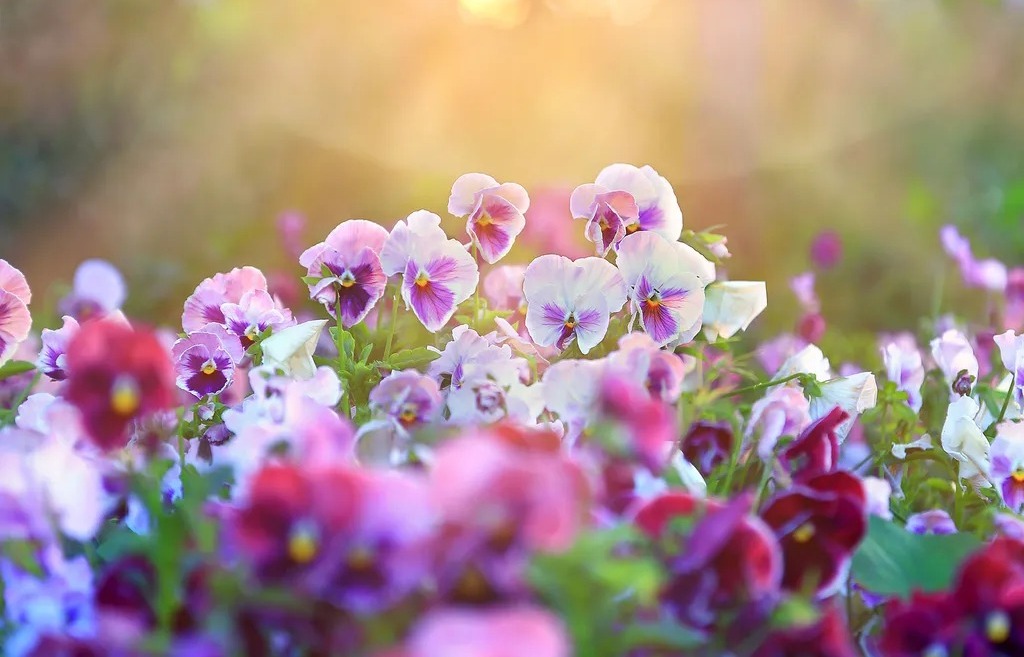[ad_1]
As temperatures start to cool and days shorten, late September becomes an ideal time to plant additions to both ornamental and productive garden areas. Here’s a guide on what to plant in September:
Flowers and Plants to Grow in September
Ammi Majus (Bishop’s Flower)
- Ammi majus, also known as bishop’s flower, has delicate, lacy white flowers resembling a more refined version of cow parsley. It’s an excellent white filler for cut flower gardens. Sow seeds directly in the fall, thinning seedlings to about 60 cm apart, to ensure larger and more prolific blooms by late spring.
Scabious ‘Black Cat’
- Scabious, or pincushion flowers, are known for their reliability. The ‘Black Cat’ variety has gently scented, deep velvet-crimson flowers on long, wiry stems. It is also an insect-friendly choice, making it great for pollinators. Sow seeds under cover in gentle heat and overwinter seedlings in a cool, bright location.
Euphorbia Oblongata
- Euphorbia oblongata, with its vibrant acid-green flowers, is a short-lived perennial that flowers best in its first year and is often treated as a hardy annual. Sow under cover in September, then plant seedlings out in mild gardens or overwinter them in a cold frame or unheated greenhouse for spring planting. Use gloves when handling as its sap can cause skin irritation.
Calendula (English or Pot Marigolds)
- Hardy annuals, calendula, bring vibrant orange to beds and borders and can also be added raw to salads. Sow calendula seeds in September in well-prepared soil or containers, thinning them to 10-15 cm apart. They should flower in May if sown in the fall. Calendula is also excellent for companion planting, as its scent confuses pests.
Daffodils
- Daffodils are the heralds of spring, filling gardens with their cheerful yellow or white blooms. Plant daffodil bulbs in the fall in sun or part shade, ensuring they are planted deep enough to avoid damage when planting other plants later. Ideal for naturalizing in lawns and meadows or adding to spring container displays.
Pansies
- Winter pansies can bring color to garden beds and containers throughout the colder months. Plant these perennials in September to allow their roots to establish before winter. Fertilize after planting and add mulch around them once the ground freezes to help them overwinter.
Vegetables to Plant in September
Spring Onions
- Spring onions planted now will provide an early spring harvest. Start seeds in trays and transplant them when they are large enough to handle. They are also among the easiest vegetables to grow in shaded areas.
Garlic
- Garlic is a versatile and essential kitchen crop. It requires a long growing season, so planting in September ensures a bigger harvest. Plant garlic cloves about 15 cm apart in rows spaced 30 cm apart. Harvest will be ready approximately 10 months after planting.
Shallots
- Shallots have a long growing cycle, making September a great time to plant them for a summer harvest. Space them 20 cm apart, with 30 cm between rows, and cover with fleece or netting to protect from birds.
Spinach
- Plant hardy winter varieties of spinach in September for a nutritious winter harvest. Enrich the soil with compost before planting for vigorous growth. Spinach can be harvested within 6 to 10 weeks and is also suitable for container gardening.
Radishes
- Radishes, with their peppery taste, are a quick-growing fall crop that can be added to salads or roasted. They grow best in sunny positions with moist, well-drained soil. Sow seeds sparingly in September for a continuous harvest through fall and winter.
Turnips
- If planted early in September, turnips can provide a fall or winter harvest. This fast-growing crop thrives in cool, moisture-retentive soil in a sunny location or large containers. Sow turnips little and often to enjoy them as baby vegetables in roasts or salads.
By planning your September planting wisely, you can enjoy a beautiful and productive garden year-round.
Jobs to Do in the Garden in September
Lift, Divide, and Replant Herbaceous Perennials
- Once herbaceous perennials like geraniums, delphiniums, and lupins have finished flowering, lift and divide their clumps. This practice helps maintain plant health and encourages multiplication.
Trim Hedges
- Trim hedges to preserve their shape, prevent them from becoming overgrown, and ensure they continue to thrive. Be cautious not to disturb any birds’ nests during this process.
Clean and Disinfect the Greenhouse
- Clean the greenhouse glass on both sides using warm, soapy water. Disinfect the flooring and shelving with an eco-friendly disinfectant to control pests and diseases.
Deadhead Late Summer Flowers
- To extend the blooming period into autumn, deadhead flowers such as dahlias, roses, and penstemons. Cut just below the spent flowerheads to encourage continued flowering.
[ad_2]
